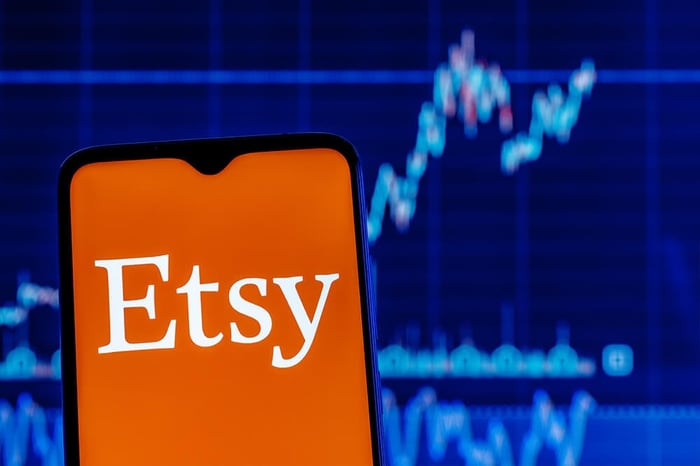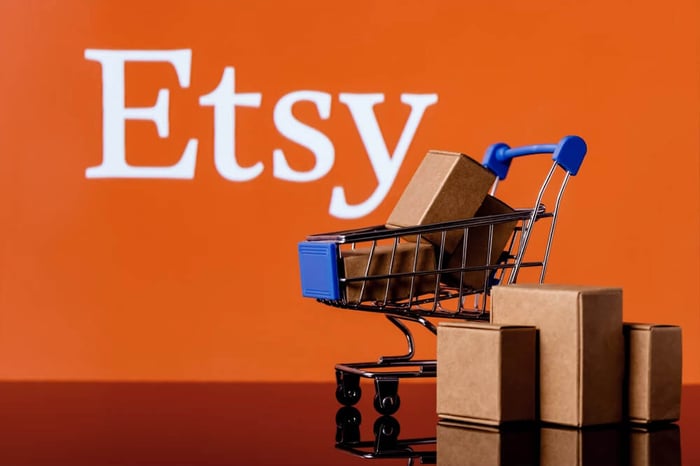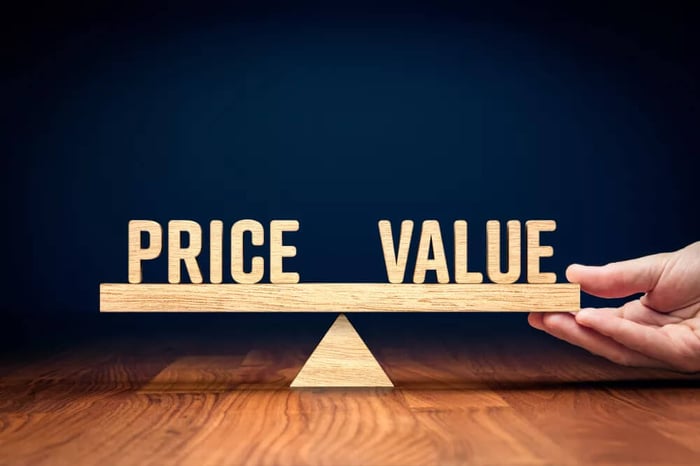Ad Views: In marketing terms, this is your impressions. In other words, it’s how many times your product was displayed to someone in the Etsy Search results, regardless of whether or not they clicked. Your product will be intermingled with a screen full of your competitors. This number in and of itself isn’t highly actionable, and is mostly based on the amount of budget that you put towards your Ad Views.
Clicks: Clicks is exactly what it sounds like. How many times did someone click on your listing after it was served up on their screen as an Ad View. Etsy ads currently charges per click, so this number is directly tied to your budget. It can be manipulated by changing the amount you are spending on Etsy Ads. In other words, if you go from spending $1 per day on ads, to $5 per day, you should see your clicks go up roughly proportionally.
Click Rate: The click rate is simply the number of clicks divided by the number of views. So it’s a calculation based on the first two metrics. A high click rate indicates that your product is doing a good job of grabbing the attention of people who see it. You can influence this with nice photographs, and strong titles. If your product doesn’t have a good click rate, you can try experimenting with different primary images on your listing, or changes to your title.
That said, a low click rate is not necessarily a bad thing. It could simply indicate that your product has a more narrow focus. Case in point is our “Man Riding a Snail” sticker. It has a lower click rate than our other products, but it still has a very solid ROAS (which we will address shortly).
Orders: The number of orders that were made by customers who clicked on an ad. Here is where we move into the sales and revenue portion of your advertising. The quantity of orders is frankly not super important compared to other metrics here.
Revenue: This refers to the dollar value of the purchases made by customers who clicked on an ad. It’s simply the value of the orders multiplied by the number of orders. For example, our “Custom Vinyl Stickers” had 152 orders, and Revenue of $4,657. On average, people who clicked on this spent about $31 on our shop. On the other hand for our Jesus stickers, we had a lot of orders but since they are single stickers, the revenue is much lower.
Revenue is an important metric, but the ROAS is far more important as it illustrates the relationship between your spend and your sales.
Budget Spent: This is the amount of advertising dollars that Etsy put towards each of your listings. As an Etsy seller, you don’t have direct control over how much Etsy allocates to each product. You can only decide how much you want to spend in total per day on Etsy ads, and what products you want it to be used for. Etsy algorithms will then determine how the spend is allocated across your listings.
ROAS: Return on Advertising Spend. This is the most important metric on the board because it gives you a direct indication of how effective your advertising spend is. It culminates all of the prior metrics.
So how do we interpret ROAS? A ROAS of 1 means that for each dollar you spent on ads, you made one dollar in sales. With the cost of your product, and time to fulfill orders, a 1 means that you are losing money on those sales.
A good ROAS depends highly on what your product is. For stickers, our costs are pretty low, so the ROAS of 2.15 that we see for our Snail sticker is good. For other products that may be more costly to produce, an ROAS of 2.8 is often used as a benchmark.
To bring some additional context, let’s go through each of our 5 products.
The first listing, our Vinyl Custom Stickers is our best performer in terms of ROAS at 4.22. This is good for our category and industry. This means that for each dollar spent on ads, we had $4.22 in Revenue. Looking at it another way: our average Custom Sticker purchase from ads is $31 (the revenue divided by the number of orders). So to acquire each $31 order we are spending $7.31 in advertising (1/4.22*31). If we assume our material and fulfillment cost is another $10, that means we are making around $14 in profit from each of these orders. Not bad. Additionally, we observe high rates of repeat business, suggesting that a customer's lifetime profit may yet be higher. So we clearly leave advertising on for this listing, and it could be worth testing higher daily advertising spend to see how it impacts the ROAS.
Our second and third listings are the two Jesus stickers. They don’t have particularly strong ROAS figures. For that reason we turned off ads for these two products. However, our “I Saw That” sticker is still an excellent seller on our shop, so we put it on our “featured listings” on our storefront.
Fourth, we’ve talked about the Snail sticker a couple times now. Relative to our printing costs, our Snail sticker has a strong ROAS so we leave advertisements on for it. Although the click through rate is not particularly good, the high ROAS indicates that a decent portion of those who click on it, go on to buy it. It’s a sticker that has a narrow but profitable appeal.
Finally, our Text Stickers. The ROAS is the lowest on the board. Interestingly, it is our second-best-selling product on our store. So it’s worth noting that even though Etsy ads may not be effective for a given product, that doesn’t mean the product won’t sell. For the moment, we are turning off Ads. Next steps are to dig into what key words have been driving search terms for this product and see if we can improve or optimize the title and tags so that when they come up in search, they're more relevant. This could result in better ROAS in the future.
Want to Start Your Own Etsy Shop?








